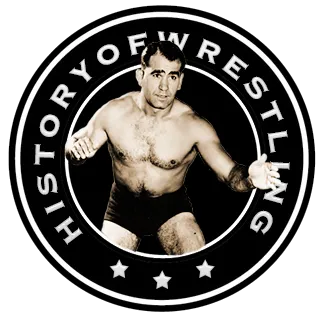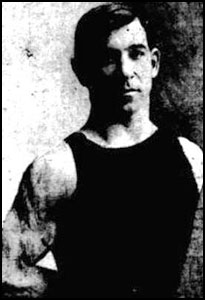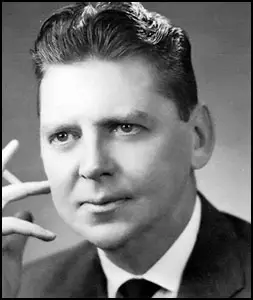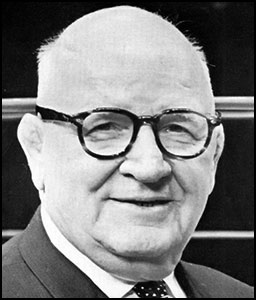by Mark Long
World-Wide Wrestling Federation/Capital Wrestling Corp. (a.k.a. “Washington, DC”)
OWNERS/PROMOTERS:
William Joseph “Joe” Turner (1931-1947)
Vincent J. McMahon (1952-1982)
Joseph “Toots” Mondt (1957-1969)
STATES & PRIMARY CITIES:
District of Columbia (Washington)
MAJOR CHAMPIONSHIPS:
WWWF World Heavyweight title (1963-Present)
WWWF Tag Team titles (1971-Current)
WWWF Inter-Continental title (1979-Present)
PROMOTIONAL HISTORY:
William Joseph “Joe” Turner was a legend in the Washington, DC area. A former world middleweight wrestling champion, he spent almost three decades as a favored son of the city, following his active career by promoting boxing and wrestling shows at Griffith Stadium and the city’s Auditorium. When informed in 1935 that the Auditorium would no longer be available for his shows, he signed an agreement to lease a structure at 1342 W Street in Northwest DC. The building was essentially a large garage that was owned by Cresson E. Finch. Grand renovations would allow the building to accommodate 1,880 seats and would be named “Turner’s Arena.” Turner held his first wrestling match on December 5, 1935 and the crowd swelled to almost 2,500 for a main event which saw World Champion Danno O’Mahoney defeat Jack Donovan. Other stars who wrestled there for Turner included Michele Leone and Ernie Dusek. Turner passed away suddenly in 1947 leaving his business it to his widow, Florence, to continue running with the help of Gabe Menendez, a long time employee of Joe. On December 3, 1948, Vincent J. McMahon was brought in to act as the general manager of Turner Arena.
In December 1952, McMahon purchased the rights to the Washington, DC territory from Menendez, including a sublease to Turner’s Arena. The purchase price was $60,000.00 and McMahon and his silent partners (Nat Proctor, Philip Gray, and Charles O’Connell) continued to put on weekly wrestling shows, obtaining talent through various sources, but mostly from Joseph “Toots” Mondt from New York. While McMahon had purchased the “rights” to the city, it was not without a fight, as Rudy Dusek entered the city and put on rival shows from the Uline Arena. Dusek televised his matches on Dumont Network affiliate WTTG in the city, in bold opposition to the wrestling shows being broadcast on WMAL television under the watchful eye of Menendez. After a peace had been established between the parties, McMahon focused on building his company.
Turner Arena was renamed Capitol Arena by in 1956, reflecting the ownership by Capitol Wrestling Corporation (CWC) which had been established on January 7, 1953 (CWC was believed to have been established by Vince’s father, Jess McMahon, and Toots Mondt in order to provide financial support to Vince). Some of the early stars that McMahon pushed were the Zebra Kid, the Golden Terror, and the Swedish Angel. Soon, though, he was bringing in wrestlers from across the country, including huge stars such as Antonino Rocca and Verne Gagne. Gagne represented a milestone because he was featured on Fred Kohler’s national television broadcast on the Dumont network. Kohler was feeding much of his talent to Toots Mondt, who sent some of that talent to McMahon to use in Washington, DC arena events. At the same time, Philadelphia promoter Ray Fabiani “invaded” the DC area, with talent obtained from Al Haft from Ohio. Fabiani even advertised that he was bringing Lou Thesz in to wrestle for him in the nation’s capital. McMahon, at the time, was attempting to land a television deal to broadcast live wrestling on WTTG. With the two promoters at odds, McMahon requested that the National Wrestling Alliance make a decision on which promotion it would support. NWA President Sam Muchnick subsequently sent NWA champion Lou Thesz to wrestle for Capitol Wrestling on January 12, 1956, buoying McMahon’s claim to the city. In addition to the talent obtained from Mondt, McMahon also brought in female wrestlers from Billy Wolfe’s traveling stable and he brought in heel wrestlers like Hans Schmidt and alleged Nazi Karl Von Hess to fight heroes like Rocca and Red Bastien. His formula and variety of performers proved so successful that it gained the attention of television stations in New York City. WABD, an independent station owned by DuMont Broadcasting Corporation (as was WTTG) had been broadcasting a stale studio wrestling show from the DuMont Telecenter in Manhattan. Instead, in part as a cost cutting measure, WABD began broadcasting McMahon’s live shows from the Capitol Arena on Thursday nights beginning on June 21, 1956.
The increased exposure from New York City vaulted McMahon into the role of a powerbroker, especially in the Northeastern area of the United States as he put his now red hot wrestlers on tour throughout the region. He focused especially on the New York area, strengthening his relationship with Mondt who enjoyed a formidable relationship with Kola Kawarani and other decision makers in the city. McMahon brought in Johnny Doyle from Los Angeles to help Mondt in his day to day activities. The group filed paperwork to create a new company, known officially as the Capitol Wrestling Corporation in Washington, DC on August 5, 1957, with 1,000 shares being divided, with VInce and Toots owning 42% each and Doyle owning 16% (because Mondt was in financial straits (Phil Zacko from Pennsylvania actually purchased and held Mondt’s shares until Toots was able to pay him back). In 1958, Doyle left the company to work for Paul Bowser in Boston with Vince and Toots purchasing and splitting his 16% ownership. CWC’s television was broadcast in the DC area as well as in New York on Thursday nights and was hosted by Ray Morgan.
Capitol Wrestling Corporation was incorporated in the state of New York on March 10, 1961, acknowledging the growing importance of the Northeastern audience the company was serving. Capitol booked star wrestlers from across the United States, but the company put its momentum behind the career of Buddy Rogers. While not a wrestler of Lou Thesz’ caliber, nor as exciting an athlete as Antonino Rocca, Rogers was considered the top performer in the business, combining an array of action-packed wrestling moves with a heel personality that begged fans to spend their money to boo him. As such, Capitol booked him across the country and argued that he was the man who should carry the NWA World Heavyweight belt. After a great deal of lobbying with numerous NWA promoters, Rogers was indeed chosen to capture the belt and did so by defeating Pat O’Connor in in front of 38,622 fans in Chicago, Illinois on June 30, 1961. McMahon and Mondt were supposed to book him to take the belt throughout the NWA territories, but instead booked him mainly in the towns they controlled. The belt allowed him to earn even more money in the Northeast of the United States, but drew the anger of NWA affiliates who never saw the champion passing through their towns. The decision was made, therefore, to take the belt off of him and the choice was for Thesz to take it. Thus, on January 24, 1963, Rogers lost the NWA World championship to Thesz in Toronto, Ontario, Canada in one fall. Rather than acknowledge the title change, McMahon and Mondt argued that because the match ended in only one fall instead of the customary two out of three falls, that Rogers hadn’t lost the belt, and they continued to refer to him as the World Champion. Within months, Capitol announced that it was withdrawing from the NWA and was establishing the World-Wide Wrestling Federation (WWWF) as its official governing body. Ray Morgan also announced on the April 11, 1963 broadcast of Capitol’s television show that Buddy Rogers had won a tournament in Rio De Janeiro, Brazil over Rocca and was crowned as the inaugural WWWF champion.
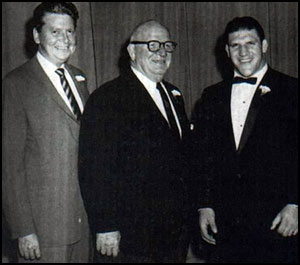
Vince McMahon, Sr, Toots Mondt & Bruno Sammartino
Almost immediately, McMahon and Mondt began butting heads with Rogers and began putting together an alternative plan for the promotion when Buddy began suffering from significant health issues. After Rogers had suffered an apparent heart attack, they brought in the Pittsburgh-based rising star Bruno Sammartino to meet him for the belt. Sammartino grabbed him in a bearhug and forced Rogers to submit in only 47 seconds to become the new title holder. The WWWF heralded Sammartino as the world champion and would ride his popularity throughout the Northeastern region for the next eight years. As the WWWF became dominant in the towns through which they toured, much of the company’s attention was focused on the New York area and the company moved its main office to the Edison Hotel in New York City in the late 1960s, leaving the Washington territory as just one of the many cities in which it toured.
